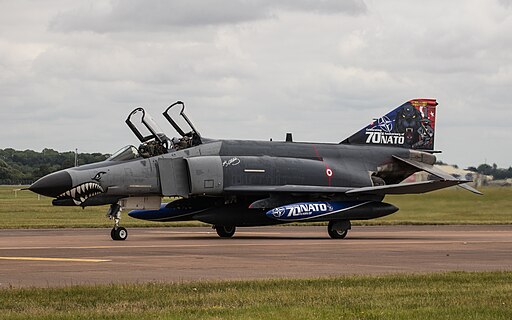In the history of military aviation, few aircraft have captured the imagination quite like the F-4 Phantom. Its twin engines roared with unmatched intensity, and its aerodynamic silhouette embodied Cold War-era air dominance. But beyond its tangible achievements in air combat and ground attack roles, the F-4 Phantom has left an indelible mark on the canvas of military aviation art.
The Phantom’s Aura: Not Just Any Jet
The F-4’s design is a masterful blend of purpose and passion. Its elongated nose, broad wings, and signature tail make it highly recognizable. Yet, these design elements are not mere whims of fancy—each serves a calculated aerodynamic function, with the Phantom being a beacon of design efficiency and menacing aesthetic appeal.
Brushstrokes of Valor
Art inspired by military endeavors is nothing new; from ancient frescoes depicting Spartan battles to the modern murals of World War II, combat and canvas have been eternal companions. The Phantom’s entry into this artistic pantheon was marked by its multi-role capabilities, serving both as an interceptor and a strike aircraft.
- Interception Imagery: Artistic renditions often showcase the Phantom in dramatic interception roles, missiles at the ready, chasing down adversaries against vivid sunsets or the cold void of the upper atmosphere. These images are a testament to the Phantom’s air-to-air prowess, where its speed and armament made it a formidable foe.
- Ground Assault Graphics: Alternatively, canvases adorned with Phantoms illustrate their ground-attack prowess. Here, the imagery often leans into the raw power of the aircraft—plumes of smoke, erupting ground targets, and the sleek form of the Phantom streaking away, leaving devastation in its wake.
Evocative Emotions: The Phantom’s Dual Nature
The F-4 Phantom, through the artistic lens, is a study in contrasts. On the one hand, its raw power and combat efficacy are portrayed, reflecting its reputation as a fearless combatant. But art, with its ever-evolving interpretations, also captures the Phantom in moments of calm, serenity, and sheer beauty.
Some pieces of art highlight the dichotomy of the Phantom’s nature. Contrasting the violent, explosive moments of combat with the tranquil glide of the machine above cloud layers, these pieces invite viewers to reflect on the multi-faceted nature of military aviation, where machines built for war can also epitomize grace and beauty.
A Legacy Beyond Combat
The legacy of the F-4 Phantom extends beyond its commendable service record. In military aviation art, it has become a symbol, a muse that continues to inspire. Artists, whether with brush or digital tools, tap into the aircraft’s dual spirit—celebrating its combat achievements while exploring its more reflective, evocative side.
Overall, the F-4 Phantom, with its robust history and distinctive design, will forever remain a touchstone in military aviation art. While its combat days may have waned, its presence on the canvas is eternal, bridging the gap between the tangible realm of aerial warfare and the ethereal domain of artistic interpretation. Every brushstroke that captures its essence is a tribute to its enduring impact, reminding us of the profound connection between art, history, and the machines that shape them.
For more insights into the F-4 Phantom II, Part No. 32-31725-4, and other important military aircraft, visit Aces In Action. Here, you’ll find an amazing piece of artwork by Craig Tinder titled “Tampa Zero One,” which commemorates “Triple Ace” Col. Robin Olds and his double victory on May 20th, 1967, during the Vietnam War. The limited edition canvas print even includes a relic fragment removed from an aluminum, slotted missle panel, which seated the AIM-7 Sparrow Missle on the forward belly of an F-4 Phantom II.
Tampa Zero One – F-4 Phantom II Aviation Art by Craig Tinder
20 May 1967 – Col. Robin Olds, (“Call Sign: Tampa 01”) led two flights of F-4C Phantom IIs of the 8th Tactical Fighter Wing to provide air cover for a wing of F-105 Thunderchiefs that were en route to bomb the Kep airfield in North Vietnam. While arriving at a well-timed checkpoint, the 8 F-4s were jumped by 16 North Vietnamese MiG 17s in an ensuing battle that lasted nearly 15 minutes. Col. Olds scored two victories over the MiGs and returned safely, albeit on fumes. Col. Robin Olds ended his combat career as a triple ace with 12 victories in World War II and four during Vietnam.


